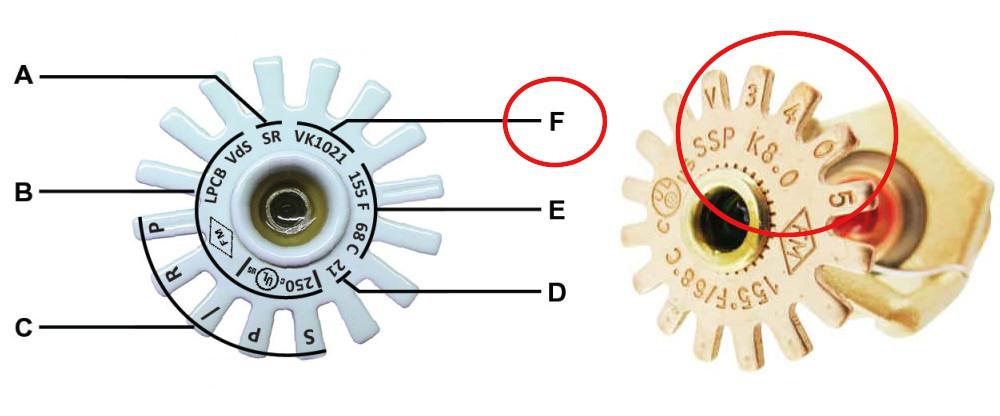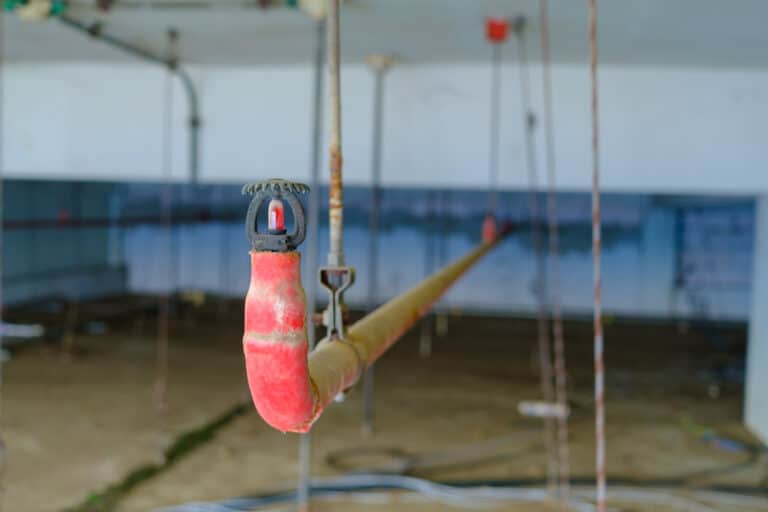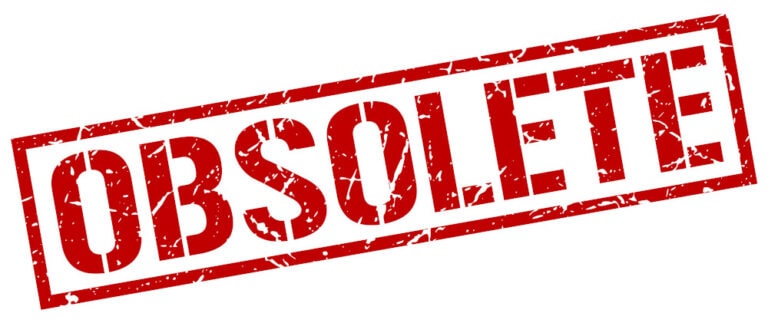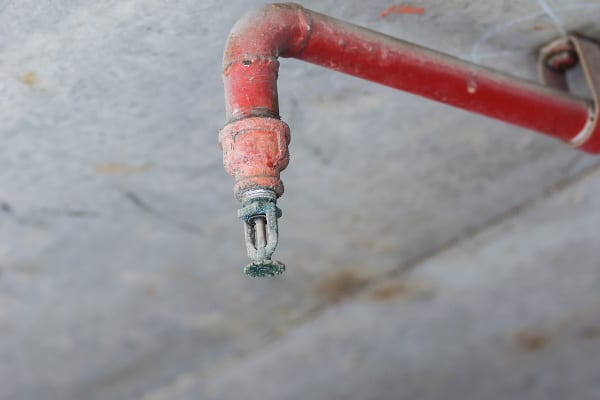The problem
Fire sprinklers last a long time, but they must be tested periodically to ensure they work properly—often decades after installation and every five to ten years after that. When one sprinkler fails a test, many others in the system need to be replaced with equivalent models.
Failing to replace sprinklers that may not function during a fire puts people and property at risk, and it’s a fire code violation. Here’s why and what to do.
Why this matters
Section 5.3 of NFPA 25: Standard for the Inspection, Testing, and Maintenance of Water-Based Fire Protection Systems (2023 edition) lays out mandatory sprinkler-testing timelines:
- Standard response sprinklers: test 50 years after installation, then every 10 years
- Most fast response sprinklers (not ESFR and CMSA): test 25 years after installation, then every 10 years
- ESFR and CMSA sprinklers: test 20 years after installation, then every 10 years
- Dry sprinklers: test 20 years after installation, then every 10 years
- Extra-high temp solder-type sprinklers in hot environments: test every 5 years
- Sprinklers in harsh/corrosive environments: test every 5 years or at 10 years and then every 5 years
When it’s time for a test, a “representative sample” of the sprinklers in the system is sent to a qualified laboratory. Experts inspect the sprinklers and put them in an oven to check whether they activate on time. If even one sprinkler fails the test, all of the sprinklers in the system that the sample represents must be replaced (5.3.1.3).
Not getting new sprinklers in a timely manner puts property and lives at risk and may lead to fines or building shutdowns.
The fix: Get the right replacement sprinklers
You must replace failed sprinklers with new ones that match the original performance specs.
The easiest way to do this is by buying the same manufacturer and model, which means picking sprinklers with identical sprinkler identification numbers (SINs). Then, choose the same activation temperature as the old sprinkler, plus any corrosion-resistant coatings (if applicable).
The SIN is a 4-7-digit code that’s on the deflector of every sprinkler made after 2000. It will start with one or two letters indicating the manufacturer:
- R or RA: Reliable
- SS: Senju
- TY: Tyco
- V: Victaulic
- VK: Viking

However, since sprinkler testing can occur decades after installation, the old sprinklers may no longer be available for sale. In this case, NFPA 25 requires replacing sprinklers with new ones that have the same performance characteristics (5.4.1.3):
- Style (e.g., standard spray, conventional)
- Orifice size and K-factor
- Temperature rating
- Coating, if any
- Deflector type (e.g., upright, pendent, sidewall)
- Design requirements
If you need help finding newer sprinklers that match the old ones, ask a qualified fire protection pro—or contact QRFS for help!
Buyer’s guide
Start by trying to find the SIN on the current sprinkler’s deflector. If you have this code:
- Use the QRFS QuickFinder
- Search for the SIN using the search bar at QRFS.com
If you don’t know the SIN or your old sprinkler doesn’t have one, you can identify the sprinkler by:
- Looking at system documentation
- Checking the list of sprinklers that should be in the onsite spare sprinkler cabinet
- Examining the markings on sprinkler frames and deflectors and conducting an online search
If you don’t have documentation specifying what an old sprinkler is, ask a local fire protection pro or send photos to QRFS—we’ll help you identify it and find replacements!
Popular sprinklers
Find replacement sprinklers at QRFS
To find a new sprinkler based on SIN:
- Use the QRFS QuickFinder
- Enter the SIN in the search bar at the top of QRFS.com
Once you have found the model, select the desired temperature and finish. Again, if you have an old sprinkler without a SIN and need assistance, contact us!
FAQs
What does it mean if one sprinkler fails testing?
If one sprinkler in the test sample fails, you must replace all sprinklers that the sample represents.
What is a “sample” in sprinkler testing?
A sample can refer to a selection of sprinklers that represents the entire system or a portion of it based on unique environments or sprinkler types (as determined by a fire protection professional). Thus, a failed sprinkler test could mean all sprinklers or only some need replacements.
Can I purchase a different sprinkler brand or model than the original?
Yes, but only if the new sprinkler matches the original performance characteristics, per NFPA 25 (5.4.1.3).
How do I find the SIN?
Look for an alphanumeric code (such as TY1234 or VK3456) displayed on the deflector. This code will always start with one or two letters indicating the manufacturer (Usually R or RA, SS, TY, V, or VK). QRFS can help identify it!
If I have the SIN, is that all the info I need to buy a replacement sprinkler?
No; from there, you must also pick the same activation temperature. Additionally, if the old sprinkler had a listed corrosion-resistant coating or finish necessary for a specific environment, you must also select that option.
What if I can’t find documentation or the old sprinkler is discontinued?
Ask your local fire protection pro to evaluate the old sprinklers or contact QRFS. We can help identify a matching replacement via photos of the sprinkler and its markings.






